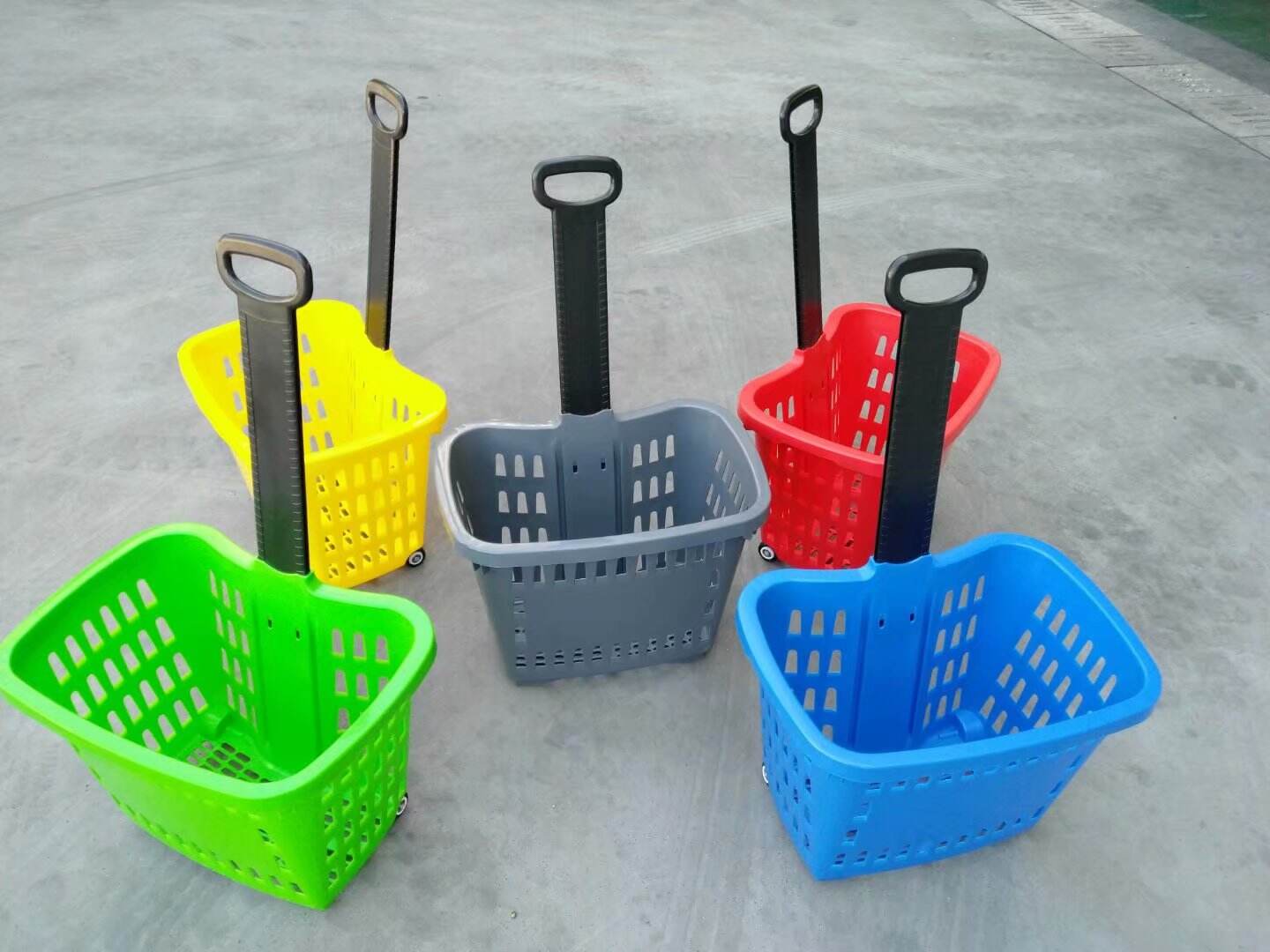Understanding the Evolution of Shopping Basket Design
Shopping baskets have come a long way from their humble beginnings as simple wire carriers. Today, they represent a crucial touchpoint between retailers and customers, with ergonomic handles emerging as a defining feature that significantly impacts the shopping experience. These thoughtfully designed handles transform an ordinary shopping basket into a tool that prioritizes customer comfort and satisfaction.
Modern retail environments demand more than just basic functionality. The integration of ergonomic handles in shopping baskets reflects a deeper understanding of human factors engineering and customer needs. This evolution in design thinking has revolutionized how shoppers interact with these essential retail tools, making every shopping trip more comfortable and efficient.
The Science Behind Ergonomic Handle Design
Biomechanical Considerations
The design of ergonomic handles takes into account complex biomechanical principles that govern human hand movement and grip strength. These handles are engineered to distribute weight evenly across the palm, reducing strain on specific pressure points. The natural curve and positioning of ergonomic handles align with the hand's anatomy, allowing for a more intuitive and comfortable grip.
Research shows that properly designed ergonomic handles can reduce muscle fatigue by up to 40% compared to traditional handles. This significant improvement comes from understanding the natural resting position of the hand and wrist, ensuring that shoppers can carry their selections with minimal physical stress.
Material Selection and Impact
The choice of materials plays a crucial role in the effectiveness of ergonomic handles. Modern designs incorporate advanced polymers and composites that offer the perfect balance of durability and tactile comfort. These materials provide sufficient friction for a secure grip while remaining smooth enough to prevent skin irritation during extended use.
Weather-resistant and antimicrobial properties are also essential considerations in material selection. High-quality ergonomic handles maintain their structural integrity and hygienic properties throughout countless shopping cycles, ensuring a consistently positive user experience.

Benefits for Different Customer Demographics
Enhanced Accessibility for Elderly Shoppers
For elderly customers, ergonomic handles represent more than just comfort – they're an essential feature that enables independent shopping. The thoughtful design accommodates common age-related conditions such as arthritis and reduced grip strength, allowing seniors to maintain their shopping autonomy with dignity and comfort.
These handles provide better stability and control, reducing the risk of accidents and increasing confidence among older shoppers. The improved grip design helps prevent the basket from slipping, even when filled with groceries or merchandise.
Support for Customers with Physical Limitations
Shoppers with various physical limitations benefit significantly from ergonomic handles. The designs account for different grip styles and hand sizes, making shopping baskets accessible to people with diverse needs. This inclusivity extends to customers with conditions affecting hand strength or mobility, ensuring they can shop comfortably and independently.
The reduced strain and improved control offered by ergonomic handles help prevent repetitive stress injuries and accommodate existing physical conditions, making shopping more accessible to everyone.
Impact on Retail Operations
Customer Satisfaction and Loyalty
Retailers who invest in shopping baskets with ergonomic handles often see improved customer satisfaction scores. This attention to customer comfort demonstrates a commitment to shopper well-being that doesn't go unnoticed. Happy customers are more likely to return, creating a positive cycle of loyalty and increased store visits.
Studies indicate that comfortable shopping experiences lead to longer store visits and potentially larger purchase amounts. When customers can shop without physical discomfort, they're more likely to explore additional products and make unplanned purchases.
Operational Efficiency
The durability of well-designed ergonomic handles reduces replacement frequency, leading to lower long-term costs for retailers. These handles are less likely to break or wear out, maintaining their functionality and appearance even under heavy use conditions. This reliability translates to fewer customer complaints and reduced maintenance requirements.
Staff members also benefit from ergonomic handles when collecting and stacking baskets, experiencing less physical strain during their daily tasks. This improved functionality contributes to a more efficient and productive retail environment.
Future Trends in Shopping Basket Handle Design
Smart Integration Possibilities
The future of ergonomic handles extends beyond physical comfort. Emerging technologies may soon allow for the integration of smart features within these handles, such as RFID tracking or digital display interfaces. These innovations could revolutionize how customers interact with shopping baskets while maintaining ergonomic benefits.
Future designs might incorporate customizable grip settings or responsive materials that adapt to individual user needs, further enhancing the shopping experience through personalization.
Sustainable Design Approaches
Environmental consciousness is driving innovation in handle design and manufacturing. New sustainable materials and production methods are being developed to create ergonomic handles that are both eco-friendly and highly functional. These advances demonstrate how comfort and environmental responsibility can coexist in retail equipment design.
The trend toward sustainable design also includes considerations for end-of-life recycling and the use of renewable resources, ensuring that ergonomic handles contribute to both customer comfort and environmental stewardship.
Frequently Asked Questions
How do ergonomic handles improve the shopping experience?
Ergonomic handles enhance shopping by providing better weight distribution, reducing hand fatigue, and offering improved grip control. They are designed to accommodate various hand sizes and strengths, making shopping more comfortable for all customers while potentially extending shopping duration and satisfaction.
What makes a shopping basket handle truly ergonomic?
A truly ergonomic handle incorporates specific design elements including proper angle positioning, appropriate material selection, optimal grip circumference, and weight distribution features. These elements work together to reduce strain, provide comfortable grip options, and support natural hand positioning.
How long do shopping baskets with ergonomic handles typically last?
Quality shopping baskets with ergonomic handles typically last 3-5 years under normal use conditions. Their durability depends on factors such as material quality, usage frequency, and maintenance practices. High-quality ergonomic handles often outlast traditional designs due to superior materials and construction methods.

